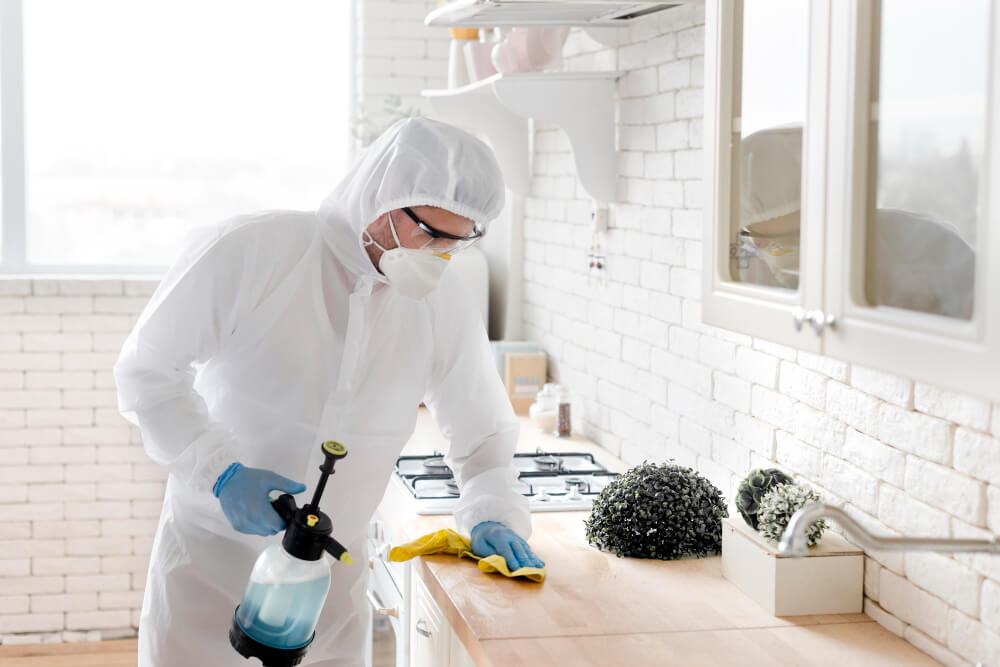It is the landlord’s responsibility to ensure safe and habitable living conditions for their tenants. And the one essential aspect of maintaining quality housing is understanding health code violations. These violations are legal standards that landlords must adhere to to provide residents with safe and healthy living environments.



This blog will provide a comprehensive yet simplified guide for landlords in the United States who are focused on compliance with health code regulations while offering affordable housing options.
The Importance of Health Code Compliance of Apartments and Rentals
Health code violations directly impact the well-being of tenants. As a landlord, your commitment to compliance safeguards the physical health and mental well-being of those who call your property home. Additionally, abiding by health codes helps build trust with tenants, minimizes legal risks, and contributes to the overall reputation of your property.
Benefits of Affordable Housing Compliance
Striving for compliance with health codes in the context of affordable housing offers numerous benefits:
1. Tenant Retention
Safe and comfortable living conditions enhance tenant satisfaction and increase the likelihood of long-term occupancy.
2. Legal Protection
Compliance minimizes the risk of legal action from tenants and regulatory authorities due to health code violations.
3. Positive Reputation
A commitment to compliance enhances your property’s reputation and can attract responsible and conscientious tenants.
4. Community Impact
By providing affordable, compliant housing, you contribute positively to the overall well-being of the community.
List of Common Rental Health Code Violations to Avoid
Understanding the most prevalent health code violations is essential for maintaining compliance. Some of the common violations include:
1. Pest Infestations
Pest infestation is one of the most common issues faced by tenants and landlords in the US. There are various types of pests that can infest residential property, leading to health issues. Some of the common examples of pest infestations are cockroaches, bed bugs, rodents, ants, termites, spiders, flies, ticks, etc. It is essential to have regular pest control measures implemented to prevent infestations.
There are a few ways to tackle the problem of pest infestation
- Ensure proper cleaning and proper waste management.
- Inspect and seal any gaps, cracks, and crevices in walls, floors, and around pipes to prevent pests from entering the building.
- Regularly trim bushes and trees, remove debris, and address standing water to eliminate potential pest habitats.
- Engage in routine pest control treatments, such as bait stations and barrier sprays, to deter pests from entering the property.
2. Mold and Moisture
This is a common problem in affordable houses with poor ventilation, leaks, and high humidity. Excessive moisture can lead to mold growth, which can trigger allergies and respiratory issues. Proper ventilation and maintenance are crucial for preventing mold-related violations.
To address the mold and moisture issue you can take these measures:
- Fix the leaky faucet promptly to eliminate the constant source of moisture.
- Install an exhaust fan or improve the existing ventilation system to ensure that humid air is properly removed from the bathroom after showers.
- Hire experts to safely remove the mold. This may involve cleaning affected surfaces and using specialized equipment to prevent mold spores from spreading.
- Hire experts to remove the mold safely. This may involve cleaning affected surfaces and using specialized equipment to prevent mold spores from spreading.
3. Sanitation and Cleanliness
Clean common areas, trash disposal, and proper waste management are vital to prevent the spread of diseases and maintain a hygienic environment. Ensure that the most neglected areas are clean, like the backyard and basements.
To ensure proper sanitation and cleanliness, follow these steps:
- Remove any discarded items from the house or around the house.
- Perform deep cleaning with sweeping, dusting, mopping, etc. to make sure that the house is clean.
- Engage with a professional pest control service to address any pest infestations and prevent future occurrences.
4. Structural Issues
Structural problems like deteriorating roofs, walls, or floors can compromise the safety of tenants.
To address the structural issues, normal wear and tear, and leaking roof, you would need to take the following steps:
- Engage a licensed roofing contractor to perform a thorough inspection of the roof’s condition and identify the extent of the damage.
- Depending on how severe the structural problems are, you might have to repair the damaged parts of the roof or replace the entire roof.
- Prioritize prompt repairs to prevent further water infiltration and property damage.
- Keep affected residents informed about the repair process and estimated timeline for completion.
- Keep records of the inspection, repair quotes, and invoices for potential legal purposes.
5. Lead Paint Hazards
Properties built before 1978 might have lead-based paint, which can be hazardous, especially to children. Compliance with lead-based paint regulations is crucial.
To address the lead paint hazards, you would need to take the following steps:
- Hire a certified lead inspector or risk assessor to test for lead-based paint on the property. This assessment can identify the presence and severity of lead hazards.
- Inform tenants, potential buyers, and other parties about lead-based paint hazards to ensure compliance with federal and state laws.
- If lead-based paint is found, take steps to reduce exposure. These steps may include fixing chipping or peeling paint, covering surfaces with a protective layer, or removing the lead paint.
- If there are kids or pregnant women in the building, take extra care to protect them. For example, close off areas with chipping paint until they can be fixed.
- Provide tenants with information about the risks of lead-based paint and educate them on proper cleaning methods to reduce exposure to lead dust.
6. Inadequate Heating and Cooling:
Tenants should have access to heating during colder months and proper cooling during hotter periods for comfortable living conditions.
To address the inadequate heating and cooling issues, you need to take the following steps:
- Arrange for a professional heating/cooling contractor to inspect and repair the heating or cooling system.
- Fix insulation problems to prevent drafts and cold spots. This may involve sealing gaps around windows and doors.
- Keep the affected tenant informed about the repair progress and any temporary solutions while the repairs are underway.
Ensuring Compliance in Apartments and Rentals
To effectively address health code violations and maintain affordable housing compliance, consider these steps:
1. Regular Inspections
Schedule routine inspections to identify and address potential violations before they escalate. Document the inspection process and any repairs made.
2. Immediate Repairs
When you find any violations, make it a priority to promptly address and fix them. Swift action not only prevents worsening conditions but also demonstrates your commitment to tenant well-being.
3. Tenant Communication
Maintain open lines of communication with tenants. Encourage them to report issues and address their concerns promptly. This collaborative approach promotes a healthier living environment.
4. Education and Training
Stay informed about local, state, and federal health codes. Attend relevant workshops or training sessions to enhance your understanding of compliance requirements.
5. Documentation
Keep thorough records of inspections, repairs, and tenant communications. Proper documentation can serve as evidence of your dedication to compliance in case of legal disputes.
6. Collaboration with Professionals
Engage with professionals such as pest control experts, contractors, and environmental inspectors to ensure comprehensive compliance.
Final Words
Understanding health code violations and their implications is fundamental for landlords, particularly those providing affordable housing. Prioritizing compliance not only ensures tenant safety and well-being but also protects your investment and reputation. By following the steps outlined in this simplified guide, you can navigate health code regulations effectively and provide residents with a quality living experience in their affordable homes.




